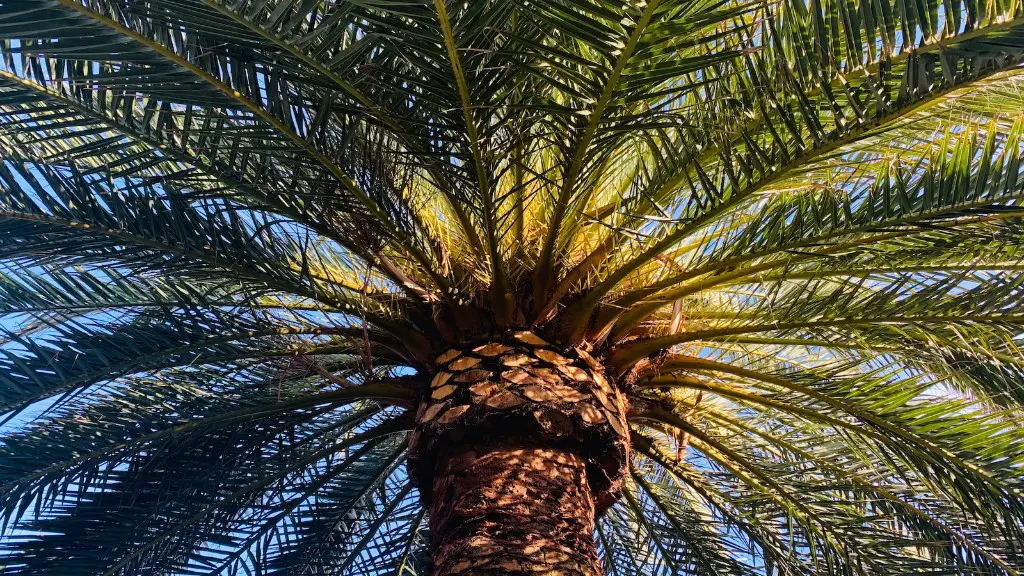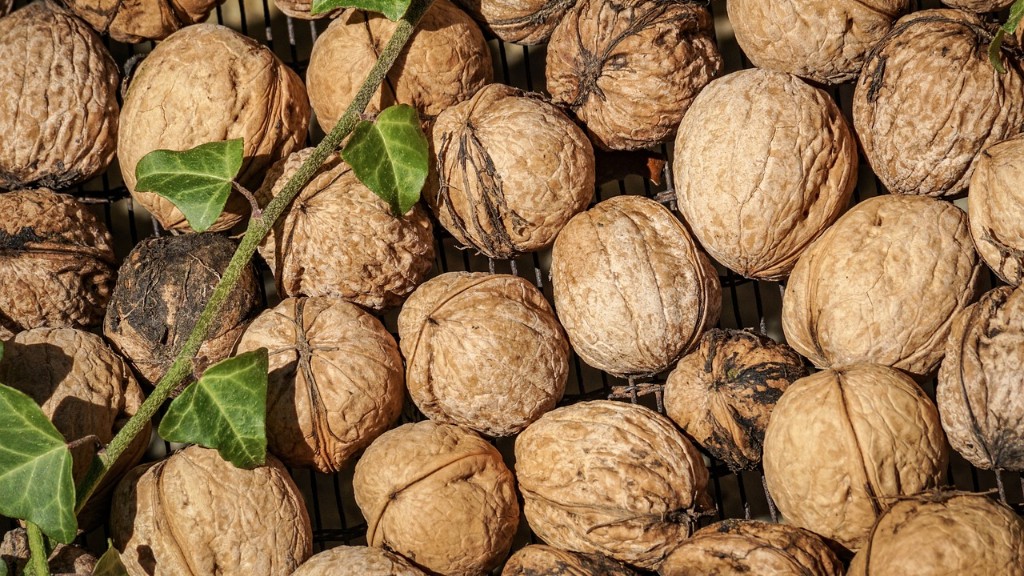Planting apple tree seeds is a great way to have fresh apples from your own backyard. Knowing when to plant apple tree seeds is key to getting the most out of your apple trees. Here’s what you need to know about when to sow apple tree seeds.
Apple tree seed can be sown in either spring or autumn. If you have a relatively mild climate, you can begin sowing in early spring. Spring sowing is typically recommended for warmer climates, as seeds sown in cooler climates may not have enough time to germinate before winter. Autumn sowing is ideal for apple trees growing in cooler climates, as the seeds will have longer to grow before the onset of winter.
When planting, consider the soil type. Trees will require well-drained, moist soil to grow their roots, so you’ll want to loosen and loosen the soil before planting. Add some compost or peat moss to boost the nutrient content of the soil. If the soil is particularly wet, you may need to mix in some sand to help drainage.
You’ll want to dig holes that are slightly smaller than the circumference of the seed. Plant one seed per hole and cover with a couple of inches of soil. When the seed has started sprouting and the trees are about six months old, you can transplant them to their permanent location. Depending on the climate, the tree should flower within three to six years and will produce fruit in its fifth or sixth year.
Choose an area with plenty of space and plenty of sun. If the area you’ve chosen is near other trees, trim away competing vegetation to allow the sapling to receive enough sunlight. Once your apple tree is established, use compost and mulch to keep weeds at bay and care for the tree, pruning as needed to ensure good structure and development.
Springtime is a good time for planting apple tree seeds, as the seedlings will have the summer and fall to establish themselves before the colder months arrive. Adequate spacing between the seedlings is important for optimal growth, so keep that in mind when sowing and transplanting. With the proper care and attention, you’ll soon have enough apples from your own trees to feed your family and friends.
When Should You Prune Your Apple Tree?
Once your apple tree has grown to a reasonable size, it will require regular pruning to keep it in good health and to help it bear abundant, flavorful apples each year. Pruning apple trees is best done in late winter or early spring right before the buds begin to swell and just before the new growth appears. Pruning will help to encourage the production of apples and to encourage the growth of strong, well-structured trees.
It is important to prune your apple tree correctly to ensure its healthy growth and development. Always use clean and sharp tools when pruning and aim to cut at a minimum of a 45-degree angle. It is important to prune out any damaged, diseased, or dead wood from the tree and to also prune away any dead or crossing branches. Pruning back larger branches will help to keep the tree open, allowing for an increase in air circulation and sunlight penetration.
In general, prune upper branches more aggressively than lower. Start by removing any crossing or dead branches and any shoots coming from the middle of the trunk. Also, prune back the tips of the branches to maintain the desired length, reducing the length of ones that are too long and extending the length of those that are too short. Regular pruning will help to maintain the desired shape and encourage the production of a greater amount of fruit.
Once you’re done pruning, apply a layer of mulch to the base of the tree to create a better soil environment and to keep weeds from encroaching. In addition, you’ll want to regularly check for signs of damage or fungal diseases and treat them as soon as you notice them. Follow these simple tips for pruning your apple tree and you’ll be sure to enjoy a great harvest every year.
How To Select A Variety Of Apple Tree To Plant?
With so many varieties of apple trees available on the market, the task of selecting the right variety to plant can be daunting. The key is to determine the proper size of the tree that you need and how you plan to use the apples. It’s also important to understand the differences between the various apple varieties and how they respond to various environmental conditions.
When selecting an apple variety, consider its growth characteristics, cold tolerance, and pollination needs. Dwarf varieties are well-suited for small spaces and limited root systems, while standard varieties are a better choice for larger spaces. Cold-hardy varieties will stand up to cold winters, while those that require a longer growing season should be planted in warmer regions. Finally, identify what kind of pollinators the tree needs to produce fruit, such as honeybees or native bees.
In addition to these considerations, taste preferences also play a role in your selection. Sweet apple varieties are best for eating fresh, while tart apples are often used for baking or cooking. If you are looking for a tree that produces apples to store over the winter, choose a variety that stores well. Finally, consider the growing and maintenance needs of the tree to determine which types of apples you can grow in the long-term.
With careful consideration and research, selecting the right apple tree will be easy. Knowing the right variety to plant and the right time to do so will help ensure you reap a bountiful harvest of juicy, flavorful apples every year.
What Climate Is Best For Growing Apple Trees?
The climate you choose for growing apple trees has a significant effect on the success of your harvest and the quality of the apples. Apple trees require a favorable climate in order to produce the best fruit with the fullest flavor, and this will depend largely on the variety of apple planted. Choose the right variety based on your climate and you’ll be sure to enjoy a great harvest of delicious apples.
Apple trees require a cold winter of about 1,000 to 1,500 chill hours to set the flowers for the following spring. This means that in warmer climates, it is best to select apple varieties that have a low chill requirement. Colder climates need chilly days in number to ensure good blooms, so those planting in these regions should select varieties that have a high chill requirement.
Apple trees will also require some sunlight during the growing season to develop a full crop. A minimum of eight hours of direct sun each day is recommended, though this will vary depending on the type of apple. Additionally, apples trees will require well-drained soil and enough moisture during the growing season to support their growth.
When selecting the right variety of apple tree for your climate, consider the chill hours, sun requirements, and moisture levels in the area and choose a variety that meets these criteria. With the right variety and the proper care and attention, you will soon be enjoying the bounty of apples from your own tree.
What Care And Maintenance Do Apple Trees Require?
Apple trees require routine care and maintenance in order to grow strong and healthy and to produce plentiful, flavorful apples. In addition to regular pruning and pest control, adequate watering and fertilization are also essential.
To ensure adequate water supply, check the soil around the tree frequently and water if it feels dry. Water early in the morning when possible and focus on giving the trees a deep soaking. Apple trees may also need supplemental irrigation during periods of drought.
Fertilizing apple trees is also important to keep them in good health. Apply a balanced fertilizer in the spring or early summer, when the new growth is beginning to emerge. Additionally, apply an organic fertilizer or soil amendments to the area around the base of the tree in late winter or early spring to add essential nutrients to the soil.
Finally, properly dispose of harvested apples, fallen fruits, and pruned branches to avoid pests and diseases. Keeping unwanted pests and diseases away from the apple tree will help to ensure the health of the tree and a good crop of apples each year.
With the right care and attention, your apple trees will thrive and reward you with delicious fruits each year. With patience and dedication, you’ll soon be able to enjoy a bountiful harvest of sweet, juicy apples.





